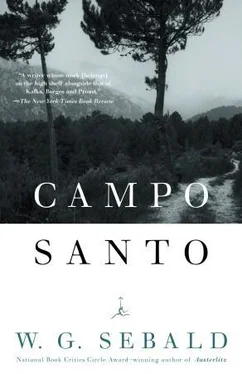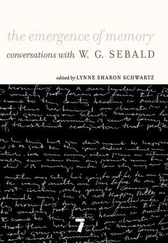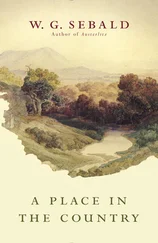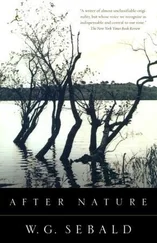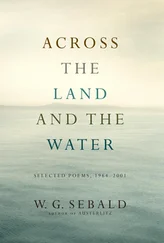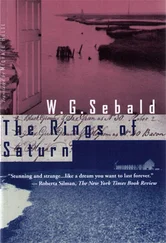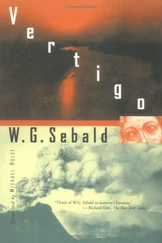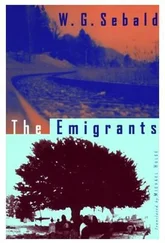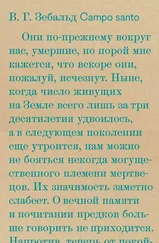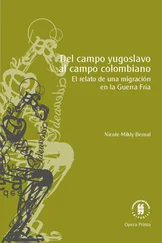In reflecting on the changes that have happened to him, Kaspar breaks out of the role that he was given to play. His inquiries take him back to a point when, entering paradise through the gateway of thought, he regains the naïveté of his pre-existence. He remembers uttering his first sentence, and in the nostalgia of such memories he encounters the unconscious perfection of his lost self. “Then once I took a look into the open, where there was a very green glow, and I said to the open: I want to be someone like somebody else was once? — and with this sentence I wanted to ask the open why it was that my feet were aching.” 27Sinking into such reminiscences, he gauges time, seeks the darkness of his life, which is now almost stripped of any mystery, until he comes upon things that are identical with his own reality, not just the reality he has assimilated. He remembers the snow that stung his hand, the landscape that “at that time was a brightly colored window shutter” and was then like a colorful shopwindow, and a gloomy legacy of “candles and bloodsuckers; ice and mosquitoes; horses and pus; hoarfrost and rats; eels and sicklebills.” 28These images, retrieved and re-created from his pre-existence, images in which Kaspar’s earlier life shows a relationship with Sigismund’s in Hofmannsthal’s Der Turm , seem to him like authentic documents of his being. Thanks to them he can say, “I still experienced myself.” The training to which he has been subjected could not entirely obliterate his memory of his beginnings. He can still go back behind what he has learned. The wild metaphors he brings back from such excursions are, in their disparate nature, like the “metaphors of a paranoia … a poetic protest against the invasion of others.” 29The crystallization point of this sign of intended rejection comes at those moments when, as Handke says in Wunschloses Unglück (“A Sorrow Beyond Dreams”), “the utmost need to communicate comes together with the ultimate speechlessness.” 30However, where images escape that paralytic confrontation, they feature, being impenetrable ciphers, as examples of broken rebellion. Their structure is that of the myth in which fact and fiction are, so to speak, inseparably linked together. And like that myth, they “involve the same sort of outrageous distortion … all symbolism harbors the curse of mediacy; it is bound to obscure what it seeks to reveal. Thus the sound of speech strives to ‘express’ subjective and objective happening, the ‘inner’ and the ‘outer’ world; but what of this it can retain is not the life and individual fullness of existence, but only a dead abbreviation of it.” 31Literature can transcend this dilemma only by keeping faith with unsocial, banned language, and by learning to use the opaque images of broken rebellion as a means of communication.
Between History and Natural History: On the Literary Description of Total Destruction
The trick of elimination is every expert’s defensive reflex.
STANISLAW LEM, IMAGINARY MAGNITUDE
I drove through ruined Cologne late at dusk, with terror of the world and of men and of myself in my heart.
VICTOR GOLLANCZ, IN DARKEST GERMANY
To this day there is no adequate explanation of why the destruction of the German cities toward the end of the Second World War was not (with those few exceptions that prove the rule) taken as a subject for literary depiction either then or later, although significant conclusions could certainly have been drawn from this admittedly complex problem. It might, after all, have been supposed that the air raids very methodically carried out over the years and directly affecting large sections of the population of Germany, as well as the radical social changes resulting from the destruction, would have been an incitement to writers to set down something about such experiences. The dearth of literary records from which anything might be learned of the extent and consequences of the destruction which is so obvious to a later generation, although those involved clearly felt no need to commemorate it, is all the more remarkable because accounts of the development of West German literature frequently speak of what they call the Trümmerliteratur (the literature of the ruins). Heinrich Böll, for instance, says of that genre in a book written in 1952: “And so we write of the war, of homecoming, of what we had seen in the war and what we found on returning home: we write of ruins.” 1The same author’s Frankfurter Vorlesungen (“Frankfurt Lectures”) contains the comment “Where would 1945, that historic moment in time, be without Eich and Celan, Borchert and Nossack, Kreuder, Aichinger and Schnurre, Richter, Kolbenhoff, Schroers, Langgässer, Krolow, Lenz, Schmidt, Andersch, Jens and Marie Luise von Kaschnitz? 2The Germany of the years 1945–1954 would have vanished long ago had it not found expression in the literature of the time.” 3One may feel a certain sympathy for such statements, but they hardly offset the near incontrovertible fact that the literature cited here, which is
sufficiently known to have dealt primarily with “personal matters” and the private feelings of its protagonists, is of relatively slight value as a source of information on the objective reality of the time, more particularly the devastation of the German cities and the patterns of psychological and social behavior affected by it. It is remarkable, to say the least, that up to Alexander Kluge’s account of the air raid of April 8, 1945, on Halberstadt, published in 1977 as Number 2 in his series of Neue Geschichten (“New Stories”), there was no literary work that to any degree filled up this lacuna in German memory, which is surely more than coincidental, and that Hans Erich Nossack and Hermann Kasack, the only writers who attempted any literary account of the new historical factor of total destruction, embarked upon their works in that vein while the war was still in progress, and sometimes even anticipated actual events. In his reminiscences of Hermann Kasack, Nossack writes: “At the end of 1942 or the beginning of 1943 I sent him thirty pages of a prose work which after the end of the war was to become my story Nekyia . Thereupon Kasack challenged me to a competition in prose. I didn’t understand what he meant by that; only much later did it become clear to me. We were both dealing with the same subject at the time, the destroyed or dead city. Today it may seem that it was not too difficult to foresee the destruction of our cities. But it is still remarkable that before the event two writers were trying to take an objective view of the totally unreal kind of reality in which we had to spend years at the time, and in which we fundamentally still find ourselves, accepting it as the form of existence allotted to us.” 4
The way that literature reacted to the collective experience of the destruction of whole tracts of human life and — as some of Nossack’s writings anticipating the documentary style show — the way it could have reacted will be illustrated here by Kasack’s novel Die Stadt hinter dem Strom (“The City Beyond the River”) and Nossack’s Der Untergang (“The End”), which was written in the summer of 1943.
Kasack’s novel, published in 1947 and one of the first “successes” of postwar German literature, had almost no effect on the literary strategies which were formed against the background of political and social restoration in the late 1940s. 5The reason was probably that the book’s aesthetic and moral aims largely corresponded to the ideas developed by the so-called internal emigrants, and thus to the style of that time, which was already obsolescent in the year of the novel’s publication. The determining feature of Kasack’s work is the contradiction it presents between the utter hopelessness of the present situation and an attempt to subject the remnants of a humanist view of the world to a new if negative synthesis. In its concrete details, the topography of the city beyond the river, in which “life, so to speak, is lived underground,” is the topography of destruction. 6“Only the façades of the buildings in the surrounding streets still stood, so that a sideways glance through the rows of empty windows gave a view of the sky.” 7And it could be argued that the account of the “lifeless life” of the people in the limbo of this twilight kingdom was also inspired by the real economic and social situation between 1943 and 1947. 8There are no vehicles anywhere, and pedestrians walk the ruined streets apathetically, “as if they no longer felt the bleak nature of their surroundings.” 9Others “could be seen in the ruined dwellings, now deprived of their purpose, searching for buried remnants of household goods, here salvaging a bit of tin or wire from the rubble, there picking up a few splinters of wood and stowing them in the bags they wore slung around them, which resembled botanical specimen tins.” 10There is a sparse assortment of junk for sale in the roofless shops: “Here a few jackets and trousers, belts with silver buckles, ties and brightly colored scarves were laid out, there a collection of shoes and boots of all kinds, often in very poor condition. Elsewhere hangers bore crumpled suits in various sizes, old-fashioned rustic smocks and jackets, along with darned stockings, socks and shirts, hats and hairnets, all on sale and jumbled up together.” 11However, the lowered standard of living and reduced economic conditions that are evident as the empirical foundations of the narrative in such passages are not the central constituents of Kasack’s novel, which by and large mythologizes the reality as it was or could be experienced. But the critical potential of the type of fiction developed by Kasack, which is concerned with the complex insight that even those who survive collective catastrophes have already experienced their death, is not realized on the level of myth in his narrative discourse; instead, and in defiance of the sobriety of his prose style, Kasack aims to present a skillful irrationalization of the life that has been destroyed. The air raids which caused the destruction of the city appear, in a pseudo-epic style reminiscent of Döblin, as transreal entities. “As if at the prompting of Indra, whose cruelty in destruction surpasses the demonic powers, they rose, the teeming messengers of death, to destroy the halls and houses of the great cities in murderous wars, a hundred times stronger than ever before, striking like the apocalypse.” 12Green-masked figures, members of a secret sect who give off a stale odor of gas and may be meant to symbolize murdered concentration camp victims, are introduced (with allegorical exaggeration) in dispute with the bogeymen of power who, blown up to more than life size, proclaim a blasphemous dominion, until they collapse in on themselves, empty husks in uniform, leaving behind a diabolical stench. In the closing passages of the novel, an attempt to make sense of the senseless is added to this mise-en-scène, which is almost worthy of Syberberg and owes its existence to the most dubious aspects of Expressionist fantasy. A venerable Master Mage sets out the complex preliminary doctrines of a combination of western philosophy and eastern wisdom. “The Master Mage indicated that for some time the thirty-three initiates had been concentrating their forces on opening up and extending the region of Asia, so long cut off, for reincarnations, and they now seemed to be intensifying their efforts by including the West too as an area for the resurrection of mind and body. This exchange of Asiatic and European ideas, hitherto only a gradual and sporadic process, was clearly perceptible in a series of phenomena.” 13
Читать дальше
